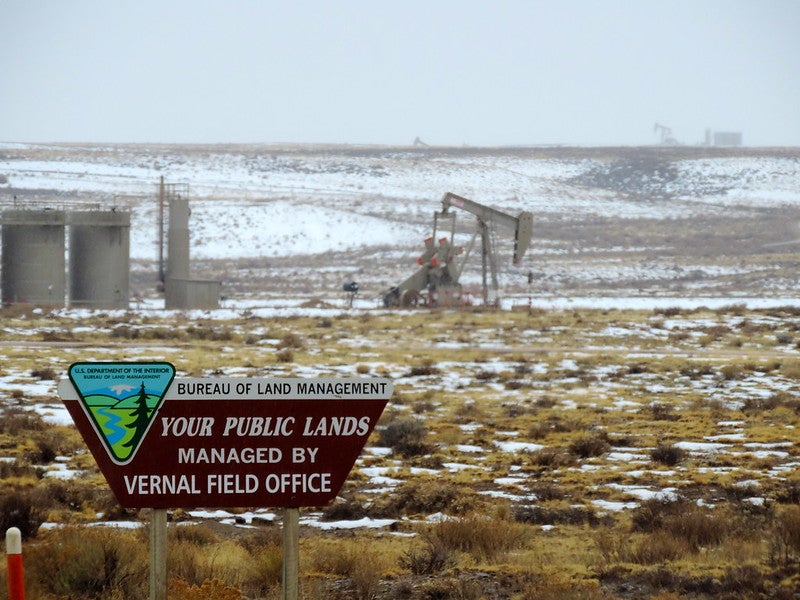Disrupting the Willow Project and Big Oil’s Even Bigger Dreams
The legal fight against the Willow Project very much continues. So, too, does the much bigger struggle to stop further expansion of the fossil fuel industry.
On Nov. 17, Earthjustice attorneys sought a court injunction against Willow, the largest proposed oil development on federal lands in decades. An injunction would prevent any buildout of Willow on the Arctic tundra of Alaska while the court of appeals considers our appeal of a recent trial court ruling that let the project move forward.
“We believe strongly that the federal government did not comply with several bedrock environmental laws when it approved the Willow project, and we look forward to litigating these claims in the appeals court,” says Earthjustice attorney Jeremy Lieb, who first filed a lawsuit against Willow in 2020 on behalf of environmental groups and indigenous communities.
If Willow proceeds as planned, the project will produce about the same amount of greenhouse gas emissions over its lifespan as adding an extra 2 million cars to the road and driving them for 30 years. The decision to allow the project to move ahead dealt a setback to the climate fight and the millions of people who spoke out against the project. But we are pushing the fight forward, knowing we cannot be building new fossil fuel infrastructure that will lock us into decades more climate pollution.
Here’s the bigger picture of how we’ll continue the Willow fight, as well as the broader fight to stop a dirty industry from extracting and burning every last drop of fossil fuel — no matter the cost to people or the climate.
First, we must keep up the legal and public pressure on Willow.
After all, it was only a few years ago that Willow seemed inevitable, and its opponents were unsure about the way forward. The project was scheduled for development and looked like a done deal.
The outcome looked grim, but Earthjustice had the experience to know better. Starting in the 2000s, we fought back in court against industry and government’s risky push to drill for oil and gas in the Arctic Ocean. We kept up the pressure until the Obama administration banned drilling in the vast majority of the ocean, then beat back the Trump administration’s efforts to undo these protections. Today, the ban still stands and has even been expanded by the Biden administration.
More recently, Earthjustice successfully sued to stop the Liberty Project, the only drilling proposal in the small area of federal Arctic waters still leased to oil companies. That victory laid the legal foundation for our challenge to Willow. And just a few months ago, legal pressure from Earthjustice successfully beat back plans for a massive oil exploration project in the Western Arctic known as Peregrine. These wins are a huge step forward in reducing oil and gas drilling on publicly owned, federal lands and waters in Alaska.

Polar bear mother with two cubs on an ice floe in the Arctic Ocean. (Sepp Friedhuber / Getty Images)
With Willow, our lawsuit in 2020 and subsequent legal actions have helped change the reality on the ground and people’s expectations for stopping the project. Our litigation highlighted Interior’s failure to assess Willow’s full climate impact, including future development that roads and other infrastructure included in the project would enable. ConocoPhillips has told investors that this construction could make as many as 3 billion barrels of oil accessible for extraction. Our legal campaign initially stopped Willow, sending the decision back to the drawing board, and creating space for a public outreach effort that ultimately led to a viral social media campaign and more than 5 million people signing petitions to stop the project.
In addition to growing public pressure, which is slowly taking away the social license of fossil fuel companies, new science connecting individual greenhouse gas emissions to climate change impacts like sea ice loss and melting permafrost undermines the decision to approve a project with a massive greenhouse gas impact in the midst of a climate crisis.
Second, we must push the federal government to stop oil drilling on public lands.

Vast acreages of public lands used for drilling in Vernal, Utah. (WildEarth Guardians / CC BY-NC-ND 2.0)
Our public lands are special and unique places that function as critical wildlife habitat, essential grounds for Indigenous hunting and fishing, refuges for people who love the outdoors, and sources for clean, fresh drinking water. Yet a full 90% of lands controlled by the Bureau of Land Management — including the land targeted for the Willow Project — are open for leasing by the oil and gas industry.
These irreplaceable landscapes, which belong to us all, should be a part of the climate solution, not used to…
Read More: Disrupting the Willow Project and Big Oil’s Even Bigger Dreams

